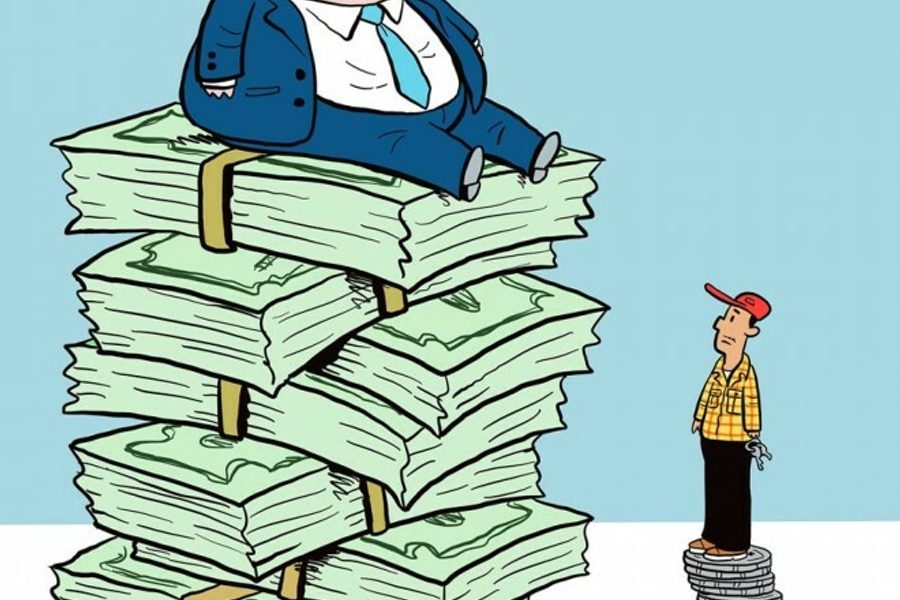Why Keith Ellison and Jeremy Corbyn Think We Should Cap CEO Pay
Does it make sense for a boss to earn more than 200 times what a worker does? The case for a maximum wage.
Dayton Martindale

max·i·mum in·come
noun
1. A legal limit on how much a person can be paid
“Give [the wealthy] awards. Lavish them with praise. Publish the names of the highest taxpayers in laudatory newspaper columns. Allow them to bask in civic pride. But take their money. They have plenty.” — Hamilton Nolan, arguing in Gawker that all income above $5 million a year be taxed at 99 percent
I get why we’d want to raise the minimum wage. But why lower the maximum?
According to the Economic Policy Institute, CEO compensation at the 350 highest-revenue publicly traded firms rose 875 percent from 1978 to 2012. Meanwhile, average worker pay at these companies grew a mere 5 percent.
In a world where so many struggle to get by, it’s easy to resent executives making millions. If companies spent less on CEOs, they might put profits toward increasing wages for everyday workers, paying more in taxes or investing in something else useful.
The real trouble with inequality, however, goes deeper than the misallocation of resources or the resentment it creates. It perverts the promise of democracy itself. So long as a tiny minority hoards most of the wealth, these oligarchs are able to exert disproportionate social and political influence.
So how would this actually work?
There are a few different ways to go about it. One would be to pick a limit— some suggest $5 million a year, others $500,000 — and tax everything above that at or near 100 percent.
Another would be to incentivize worker pay raises by tying executive salary to employee income. In 2013, a Swiss referendum proposed a 12-to-1 ratio on the logic that a CEO shouldn’t make more in a month than an employee in a year. (It lost, but garnered 35 percent support.) In an In These Times interview, Rep. Keith Ellison (D-Minn.) suggested a less strict 20-to-1 ratio.
This would have been typical in 1965, but today the average ratio is more than 200- to-1. J.C. Penney once hit 1,795-to-1.
Who else is calling for this?
U.K. Labour leader Jeremy Corbyn and French socialist Jean-Luc Melenchón have both voiced support. Back in 1942, Franklin Delano Roosevelt suggested a wartime cap at $25,000 a year, around $400,000 in today’s dollars. (He settled for an 88 percent tax rate above $200,000.) If a 100 percent top tax rate sounds out there, remember we had 90 percent under the Republican Eisenhower administration.
These calls challenge us to reckon with extreme inequality and question why, exactly, we consider certain people so much more deserving than others. As a certain German Communist once suggested, perhaps compensation should be “to each, according to his needs.”
This is part of “The Big Idea,” a monthly series offering brief introductions to progressive theories, policies, tools and strategies that can help us envision a world beyond capitalism. For recent In These Times coverage of a maximum income, see, “Keith Ellison: The Time Has Come for Medicare-for-All and a Maximum Wage.”
Dayton Martindale is a freelance writer and former associate editor at In These Times. His work has also appeared in Boston Review, Earth Island Journal, Harbinger and The Next System Project. Follow him on Twitter: @DaytonRMartind.









